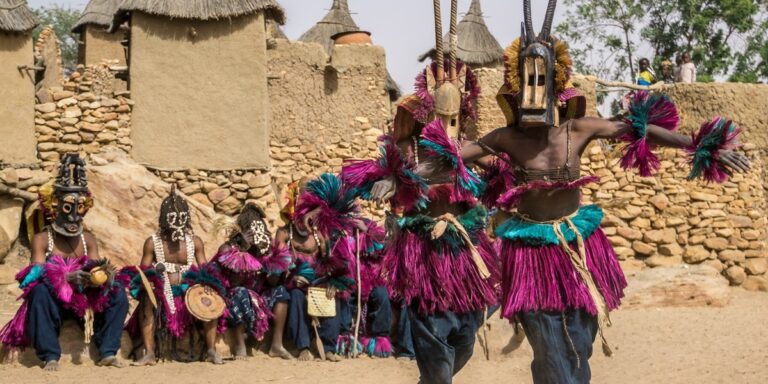Introduction: Exploring the Intersections of Malian Culture
Mali, located in West Africa, is a country rich in culture, history, and traditions. Malian culture is expressed through various forms of art, including music, dance, literature, and cuisine. The cuisine of Mali is a reflection of the country’s diverse ethnic groups and history, making it a unique blend of flavors and ingredients.
Malian cuisine has been influenced by the country’s location at the crossroads of trade routes, as well as its history of colonization and immigration. This has resulted in a cuisine that is rich in spices, grains, vegetables, and meats. Malian cuisine has also been influenced by the country’s music and arts, which play an integral role in Malian culture.
The Rich History of Malian Cuisine: A Brief Overview
Malian cuisine has a rich history that dates back to the time of the Malian Empire, which existed from the 13th to the 16th century. During this time, the Empire established trade routes that brought spices, vegetables, and grains to Mali, which were incorporated into the local cuisine.
Some of the traditional foods of Mali include rice, millet, maize, sorghum, yams, and peanuts. These ingredients are often used in stews, soups, and sauces, which are typically served with meat or fish. Spices such as ginger, cloves, and cinnamon are also commonly used in Malian cuisine.
Traditional Malian Ingredients and Flavors in Cuisine
Malian cuisine is known for its use of traditional ingredients and flavors. One of the most popular dishes in Mali is called “riz gras,” which is a rice dish that is flavored with onions, tomatoes, and meat.
Another popular dish is “tiguadege na,” which is a stew made with okra, tomatoes, and beef or chicken. Malian cuisine also includes a variety of grilled meats, such as beef, goat, and fish, which are often marinated in spices before being grilled.
Malian Music and Its Influence on Food Culture
Music is an integral part of Malian culture, and it has had a significant influence on the country’s food culture. Music festivals, such as the Festival in the Desert, often feature food vendors selling traditional Malian dishes, and music and dance performances often take place during meals.
Music has also played a role in the development of Malian cuisine. The music of Mali’s griots, or traditional musicians, often includes references to food and culinary traditions. Griots were responsible for passing down stories, traditions, and cultural practices through song, and their music has helped to preserve Malian culinary traditions.
The Impact of Malian Arts on Dining Traditions
Malian arts, such as pottery and weaving, have also had an impact on the country’s dining traditions. In Mali, pottery is often used to cook and serve food, and woven baskets are used to store and transport food.
Malian textiles, such as bogolan (mud cloth) and indigo-dyed fabrics, are often used as tablecloths and napkins. These textiles are part of the cultural heritage of Mali, and they add to the ambiance of dining experiences.
Contemporary Malian Cuisine: A Blend of Culture and Innovation
Contemporary Malian cuisine is a blend of traditional culinary practices and innovative techniques. Chefs in Mali are incorporating new ingredients and flavors into traditional dishes, such as adding mangoes to rice dishes or using local herbs to flavor grilled meats.
Malian chefs are also experimenting with fusion cuisine, combining traditional Malian dishes with flavors from other cuisines, such as French or Asian. This fusion cuisine is a reflection of the country’s history of colonization and immigration, as well as its desire to innovate and create new culinary traditions.

